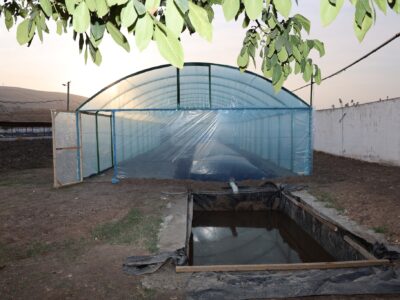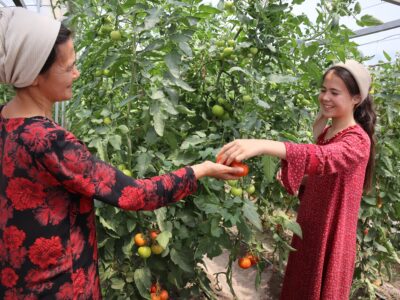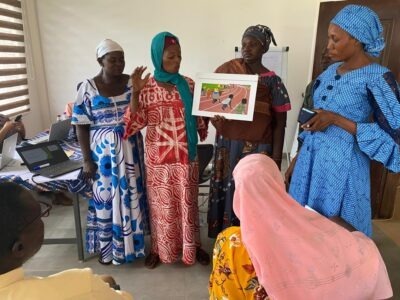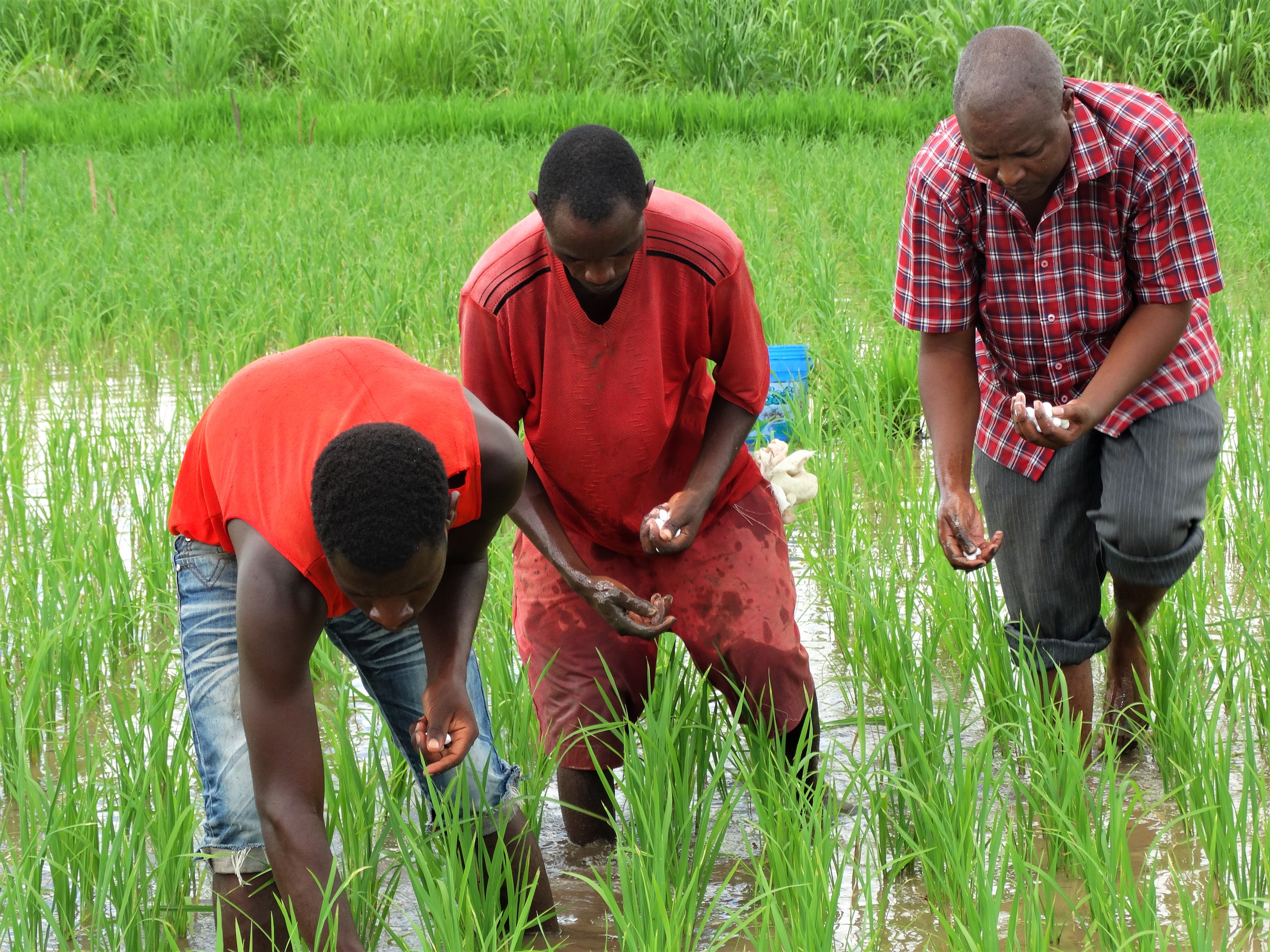
Using fertilizer continues to be one of the best ways to improve crop yields for smallholder farmers. Higher yields mean higher incomes for these farmers, who apply farming technology, like fertilizer, to improve their crops, earn more money, and provide more food for their families, many of whom are at risk of food insecurity.
One technology introduced to the island of Zanzibar, off the coast of Tanzania, was urea deep placement (UDP). UDP involves placing briquettes of urea, a colorless, crystalline fertilizer, deep below the soil surface by hand or using a machine. Placing it near the plants’ roots prevents the fertilizer from evaporating or washing away in run-off.
In 2013, the Feed the Future Tanzania Staples Value Chain (NAFAKA) project, funded by USAID and implemented by ACDI/VOCA, teamed up with the Zanzibar Rice Agricultural Institute to run a trial using UDP with rice farmers in Zanzibar’s Pemba and Unguja islands. The NAFAKA project also trained farmers in good agricultural practices. During the trial, paddy yields grew by 15 to 30 percent, and farmers lowered their costs by 26 to 35 percent because they no longer needed as much manual labor. They also saw less soil erosion on their farms because they had fewer labors doing weeding, line transplanting, and pest control.
“The farmers should make use of the UDP because it increases production, which will ensure food security in the country.” — Rashid Ali Juma, Minister of Agriculture, Natural Resources, Livestock, and Fisheries for the Revolutionary Government of Zanzibar
After the trial, the demand for these briquettes grew among farmers. But, until recently, there was no way of making briquettes locally. “Farmers were motivated to use it, but they could not access the product; and, therefore, the demand is now high to purchase the equipment,” said Shafii Kibwana, a local rice farmer.
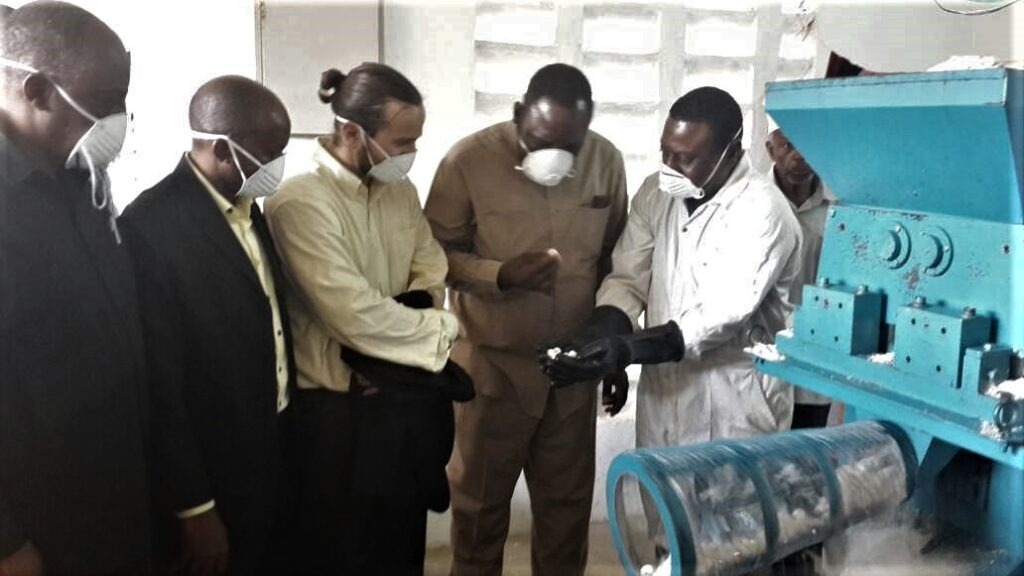 That’s why, in May 2018, the Feed the Future NAFAKA II: Cereals Market System Development project, a follow-on to the original project, gave a local agribusiness a $15,000 grant to construct a factory for producing UDP briquettes and buy the necessary machinery. The agribusiness can now produce three tons of briquettes daily and supply 1,000 tons of briquettes to Zanzibar farmers each year. This will meet 70 percent of the demand for fertilizer among farmers in Zanzibar’s Pemba and Unguja islands, according to the Zanzibar Agricultural Research Institute.
That’s why, in May 2018, the Feed the Future NAFAKA II: Cereals Market System Development project, a follow-on to the original project, gave a local agribusiness a $15,000 grant to construct a factory for producing UDP briquettes and buy the necessary machinery. The agribusiness can now produce three tons of briquettes daily and supply 1,000 tons of briquettes to Zanzibar farmers each year. This will meet 70 percent of the demand for fertilizer among farmers in Zanzibar’s Pemba and Unguja islands, according to the Zanzibar Agricultural Research Institute.
“The machine has been launched at the right time, and it will reduce the cost of paddy production because they will only apply it once with expectations of higher yields.” — Shafii Kibwana, a rice farmer in Zanzibar and NAFAKA II participant
With the new factory, rice farmers can buy what they need and adopt the new technology immediately. The NAFAKA II project and its partners continue to look for market facilitation activities to ensure farmers can access the product. The next step may be providing farmers in mainland Tanzania with a second UDP machine.
“We thank NAFAKA and its partners for the effort they are taking to assist farmers to access suitable and friendly technologies for farm activities,” Shafii said.
Learn more about the Tanzania NAFAKA II: Cereals Market System Development project.

